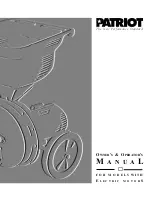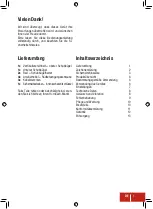
31
MINIMUM HEATING ENTERING AIR TEMPERATURE
When operating on first stage heating, the minimum tempera
-
ture of air entering the dimpled heat exchanger is 50°F continu
-
ous and 45°F intermittent for standard heat exchangers and
40°F continuous and 35°F intermittent for stainless steel heat
exchangers. To operate at lower mixed-air temperatures, a
field-supplied outdoor-air thermostat must be used to initiate
both stages of heat when the temperature is below the mini
-
mum required temperature to ensure full fire operation. Wire
the outdoor-air thermostat OALT (part no. HH22AG106) in se
-
ries with the second stage gas valve. See Fig. 53. Set the out
-
door-air thermostat at 35°F for stainless steel heat exchangers
or 45°F for standard heat exchangers. This temperature setting
will bring on the second stage of heat whenever the ambient
temperature is below the thermostat set point. Indoor comfort
may be compromised when heating is initiated using low enter
-
ing air temperatures with insufficient heating temperature rise.
Fig. 53 —
OATL Connections
Troubleshooting Heating System
Refer to Tables 10 and 11 for additional troubleshooting topics.
UCB
W2
Thermostat
TH1
TH2
W1
W1
W2
OALT
Table 10 —
Heating Service Troubleshooting
PROBLEM
CAUSE
REMEDY
Burners Will Not Ignite.
Misaligned spark electrodes.
Check flame ignition and sensor electrode positioning. Adjust as needed.
No gas at main burners.
Check gas line for air, purge as necessary. After purging gas line of air,
allow gas to dissipate for at least 5 minutes before attempting to relight
unit.
Check gas valve.
Water in gas line.
Drain water and install drip leg to trap water.
No power to furnace.
Check power supply, fuses, wiring, and circuit breaker.
No 24-v power supply to control circuit.
Check transformer. Transformers with internal overcurrent protection
require a cool down period before resetting.
Miswired or loose connections.
Check all wiring and wire nut connections.
Burned-out heat anticipator in thermostat.
Replace thermostat.
Broken thermostat wires.
Run continuity check. Replace wires, if necessary.
Inadequate Heating.
Dirty air filter.
Clean or replace filter as necessary.
Gas input to unit too low.
Check gas pressure at manifold. Clock gas meter for input. If too low,
increase manifold pressure, or replace with correct orifices.
Unit undersized for application.
Replace with proper unit or add additional unit.
Restricted airflow.
Clean filter, replace filter, or remove any restrictions.
Blower speed too low.
Use high speed tap, increase fan speed, or install optional blower, as
suitable for individual units.
Limit switch cycles main burners.
Check rotation of blower, thermostat heat anticipator settings, and
temperature rise of unit. Adjust as needed.
Too much outdoor air.
Adjust minimum position.
Check economizer operation.
Poor Flame
Characteristics.
Incomplete combustion (lack of combustion
air) results in: Aldehyde odors, CO, sooting
flame, or floating flame.
Check all screws around flue outlets and burner compartment. Tighten as
necessary.
Cracked heat exchanger.
Overfired unit — reduce input, change orifices, or adjust gas line or
manifold pressure.
Check vent for restriction. Clean as necessary.
Check orifice to burner alignment.
Burners Will Not Turn Off.
Unit is locked into Heating mode for a one
minute minimum.
Wait until mandatory one-minute time period has elapsed or reset power
to unit.
Содержание 48JC04-06
Страница 15: ...15 Fig 26 Condenser Fan Assembly Screw Pattern Sequence 1 2 3 4 5 NO SCREW Blank Tab...
Страница 30: ...30 Fig 52 Integrated Gas Controller IGC Board RED LED STATUS...
Страница 64: ...64 APPENDIX D WIRING DIAGRAMS Fig B 48JC 04 06 Control Wiring Diagram...
Страница 65: ...65 APPENDIX D WIRING DIAGRAMS Fig C 48JC 04 06 Power Wiring Diagram 208 230 460 3 60...
















































